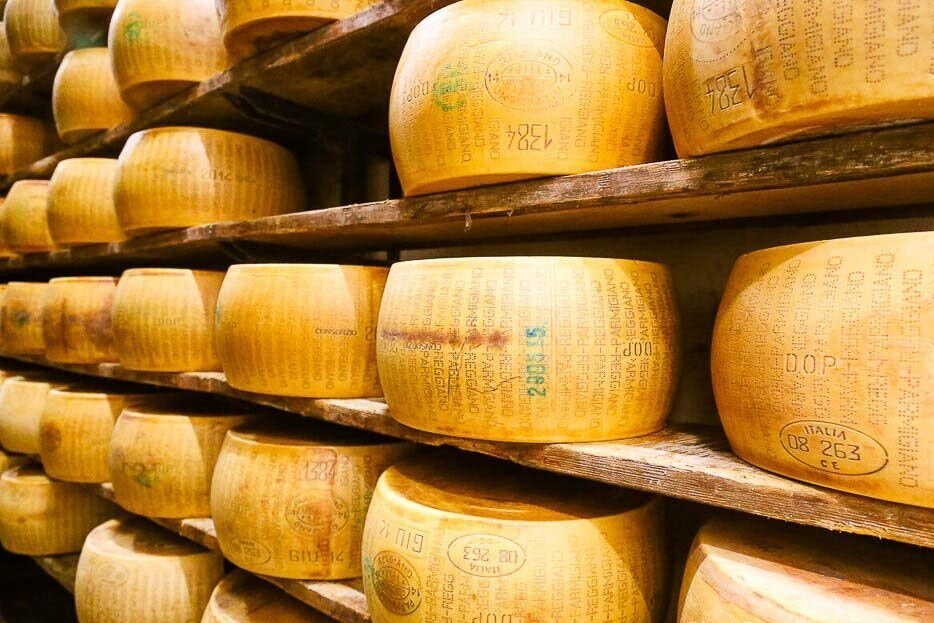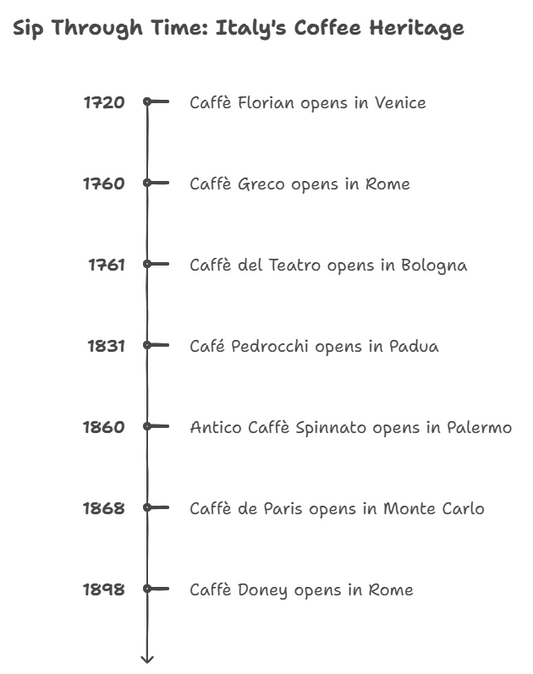If you're a fan of Italian cuisine, chances are you've heard of Parmigiano Reggiano. This well-known and beloved cheese is a staple in Italian cooking and for good reason. In this comprehensive guide, we'll explore the history, production, characteristics, and health benefits of Parmigiano Reggiano cheese.
Did you know October 27th is designated "Parmigiano Reggiano Day" by The Consortium of Parmigiano Reggiano? Massimo Bottura, a renowned Italian chef and owner of the three-Michelin-starred Osteria Francescana, has described Parmigiano Reggiano as "the king of cheeses." He praises its versatility and ability to elevate any dish, from pasta to risotto to grilled vegetables.
Parmigiano Reggiano is a specific type of Parmesan cheese that is made in a particular region of Italy using traditional methods. While there are many different types of Parmesan cheese made in various parts of the world, Parmigiano Reggiano is unique in several ways:
-
Origin: Parmigiano Reggiano is made in the Emilia-Romagna region of Italy, specifically in the provinces of Parma, Reggio Emilia, Modena, and parts of Mantua and Bologna. This area is known for its fertile land and pristine water sources, which contribute to the high-quality milk used to make the cheese.
-
Production Method: The production of Parmigiano Reggiano follows strict regulations set forth by the Consorzio del Formaggio Parmigiano Reggiano. The cheese must be made using only raw cow's milk, salt, and rennet, and it must be aged for a minimum of 12 months. The cheese is made in large, 85-pound wheels that are carefully monitored throughout the aging process.
-
Flavor and Texture: Parmigiano Reggiano has a distinct nutty, savory flavor with a firm, granular texture. It is often described as having a "crunch" when bitten into, and it has a long, lingering finish on the palate.
-
Nutritional Value: Parmigiano Reggiano is a nutrient-dense cheese, packed with protein, calcium, and other essential vitamins and minerals. It is also low in lactose and easily digestible, making it a popular choice for those with lactose intolerance.
Parmigiano Reggiano is a Protected Designation of Origin (PDO) cheese, meaning it can only be produced in certain regions of Italy using specific methods and is protected by European regulations.

Have you ever heard of Casu Marzu cheese? It's not your average cheese - in fact, it's illegal in many countries. But why? In this ultimate guide to Casu Marzu cheese, we will explore its origins, production process, controversies, and health risks associated with consuming this unique delicacy. So, whether you're a cheese enthusiast or simply curious about this infamous cheese, keep reading to learn more.
How Parmigiano Reggiano is Made
The production process for Parmigiano Reggiano is closely regulated by the Consorzio del Formaggio Parmigiano-Reggiano, which ensures that the cheese is made according to traditional methods.
- The production process for Parmigiano Reggiano is an art that has been passed down for generations. The cheese is made using raw milk from cows that graze on the hills of the Emilia-Romagna region of Italy.
- It takes approximately 550 liters of milk to produce one wheel of Parmigiano Reggiano cheese, which weighs about 40 kilograms.
- The milk is mixed with rennet to create curds, which are then cut and heated to create the characteristic texture of the cheese.
- After this process, the cheese is aged for a minimum of 12 months, with some varieties being aged for up to 36 months. The aging process is crucial to the flavor and texture of the cheese and requires a great deal of skill and expertise.
- Each wheel of Parmigiano Reggiano cheese is stamped with its production date and a distinctive dotted pattern, which helps to distinguish it from other cheeses.
- The Consorzio del Formaggio Parmigiano-Reggiano, which oversees the production of Parmigiano Reggiano cheese, estimates that there are around 3 million wheels of cheese in storage at any given time.
Is Parmigiano Reggiano Safe During Pregnancy
Parmigiano Reggiano is generally safe to consume during pregnancy in moderate amounts. However, pregnant women should be cautious about consuming any unpasteurized dairy products, including some types of Parmigiano Reggiano that may be made from unpasteurized milk. Unpasteurized dairy products can be a source of harmful bacteria such as Listeria monocytogenes, which can cause foodborne illness and may pose a risk to the developing fetus. If you have any concerns about consuming Parmigiano Reggiano or other types of cheese during pregnancy, it's always best to consult with your healthcare provider for personalized advice.
Is Parmigiano Reggiano Cheese Halal Or Vegetarian?
Parmigiano Reggiano is not considered halal because it is made using animal rennet, which is derived from the stomach lining of young calves. However, some producers of Parmigiano Reggiano use microbial or vegetable rennet instead of animal rennet, making it suitable for vegetarians. It's important to check the label or contact the producer directly to confirm if the cheese is made with microbial or vegetable rennet if you are looking for a vegetarian option.
How to Enjoy Parmigiano Reggiano
Parmigiano Reggiano is a versatile cheese that can be used in a wide variety of dishes. It is commonly grated and used as a topping for pasta dishes or salads, but can also be eaten on its own as a snack. The cheese pairs well with a variety of foods and beverages, including wine, fruits, and nuts. Proper storage and handling are important to maintain the freshness and flavor of the cheese.
Parmigiano Reggiano is a hard, granular cheese that is pale yellow in color. The cheese has a rich and complex flavor, with notes of nuttiness and a slightly sweet finish. It has a crumbly texture that melts in your mouth, making it the perfect addition to many Italian dishes. Compared to other Italian cheeses, Parmigiano Reggiano has a distinctive flavor and texture that sets it apart.
Here are a few signs to look for to determine if Parmesan cheese has gone bad:
-
Appearance: Check the color of the cheese. If the cheese has turned a darker color or has mold growing on it, then it is likely spoiled.
-
Smell: Take a sniff of the cheese. If it has a strong, unpleasant odor or smells sour, then it is probably bad.
-
Texture: If the cheese has become crumbly or has developed a slimy texture, it is likely past its prime.
-
Taste: If the cheese tastes off, has a bitter or sour flavor, or has lost its nutty, savory taste, it is probably spoiled.
It's important to note that Parmesan cheese is a hard cheese, so it has a longer shelf life than soft cheese. When stored properly in the refrigerator, unopened Parmesan cheese can last up to six months, while opened Parmesan cheese can last up to four months.
Parmigiano Reggiano is truly the king of cheeses. Its rich history, complex flavor profile, and unique texture have made it a beloved staple in Italian cuisine for centuries. From its production process to its health benefits, there is much to learn and appreciate about this iconic cheese. Whether grated on pasta, enjoyed as a snack, or paired with a glass of wine, Parmigiano Reggiano is sure to satisfy even the most discerning cheese lovers.
Besides cheese, pizza is a staple food in Italy and has become a worldwide favorite. But have you ever wondered why Italians love pizza so much? If you're a pizza lover or just curious about the Italian way of life, keep reading to find out why pizza has a special place in the hearts of Italians.




